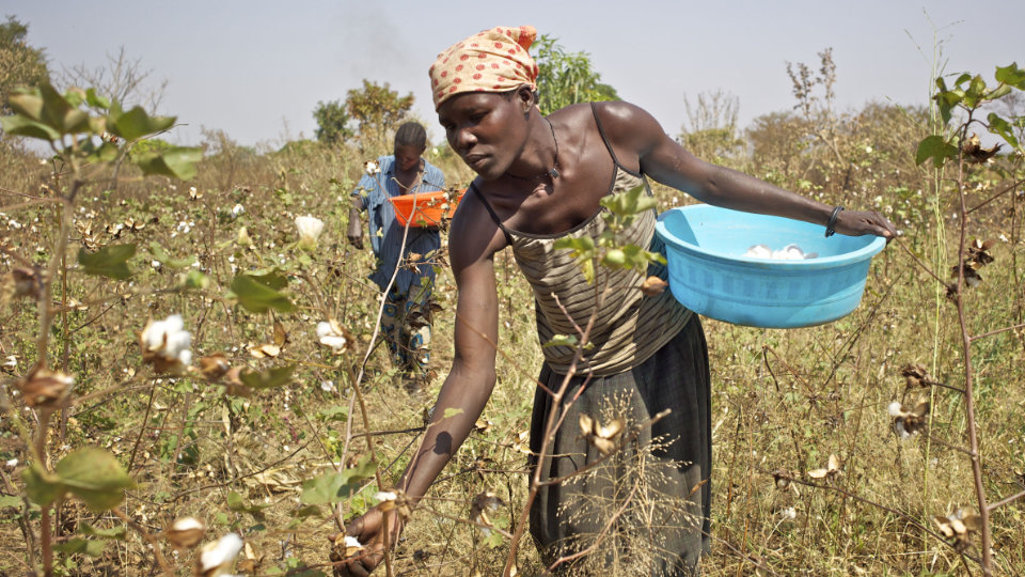Cotton requires only little water – when professionals are at work!

Cotton harvest of an ecologically-farmed field which uses rain water in Uganda. Credit: Klaus J.A. Mellenthin
Who invented it, the fairy tale of thirsty cotton; who claimed it was true, repeated and spread it, thus making everyone believe it? Maybe the synthetic fibre industry? The truth is: cotton uses less water than all other common field crops! And in the end, farmers do have to cultivate some kind of crop.
This escalation clearly shows that the cotton plant is not the problem. When taking water shortage into account, the farmer is actually more likely to decide to cultivate cotton instead of other field crops. Location, cultivation methods and irrigation management are more likely the root of any problems.
Of course, cotton, like any other plant, likes growing in moist soil during its 3-month period of growth (it does not like swampy soil, as is the case with monocultures with bad water management). During its ripening stage the temperature should be around 30 degrees Celsius, humidity or even wetness decrease its quality. The area between the 32nd parallel south to the 37th parallel north, where there has always been adequate rain up until now, provides the ideal location. There, no plants have to compete with each other for water.
But here too, many sources now mention the 45th parallel north as a possible cultivation area for cotton. Irrigation management will be the deciding factor as to whether the uncontrolled surface irrigation of monocultures will cause an environmental catastrophe such as the Aral Sea drying up in Uzbekistan, a country on the 42nd latitude. Targeted drip irrigation lowers the water consumption enormously as no water is lost to evaporation (and not to the so-called “thirst” of the cotton plant). Israel plays a leading role in this irrigation method.
Mismanagement as well as the continued repetition and spreading of incorrect facts have hurt the reputation of this modest plant, which has been used for centuries. This misinformation has simultaneously discredited the farmers who cultivate cotton in addition to other crops on their fields. This image has, at the very least, not had a positive effect on companies which cultivate organic cotton according to fair trade regulations. We must finally differentiate between the fake tales that have been damaging this ancient crop and the consequences of monocultures, “the more, the better” method of irrigation and the incorrect choice of location.